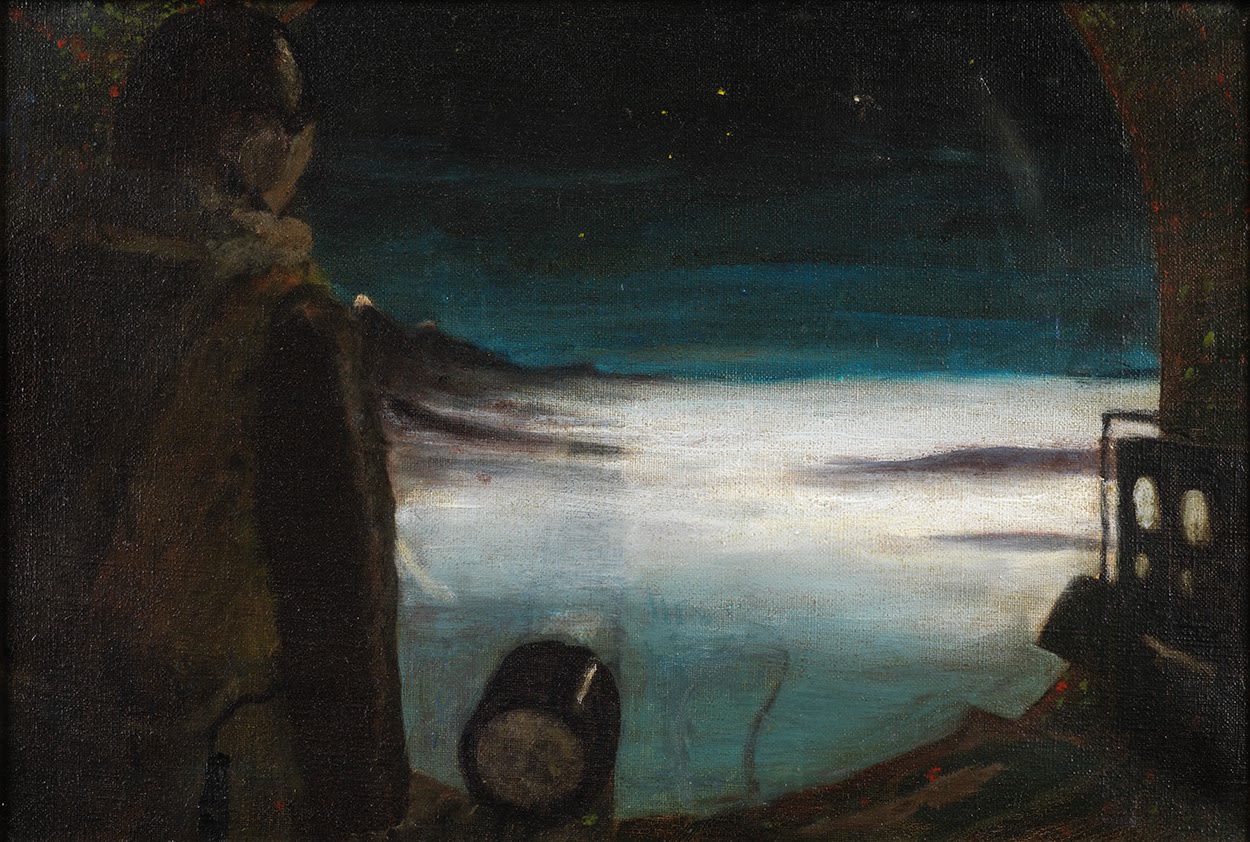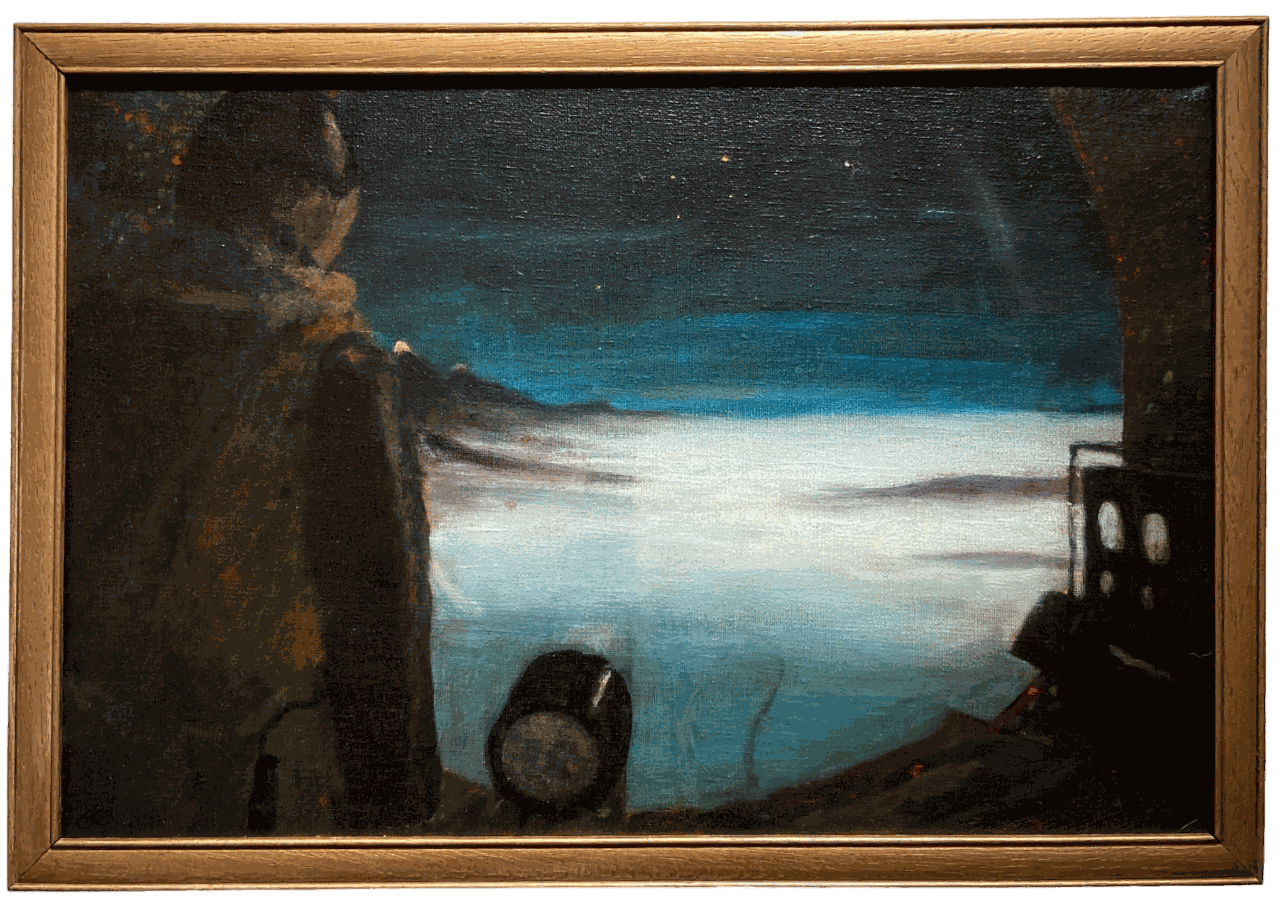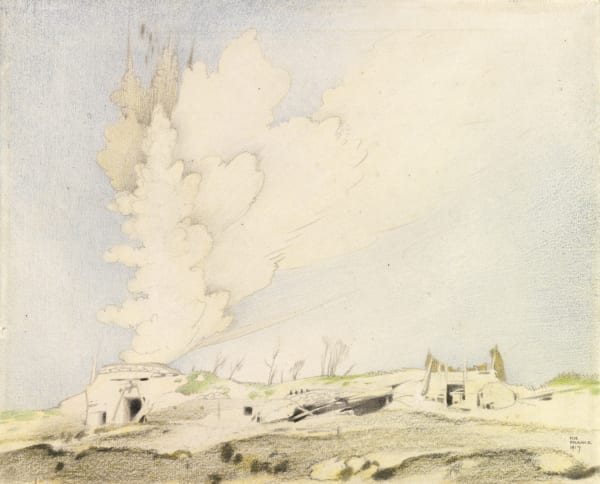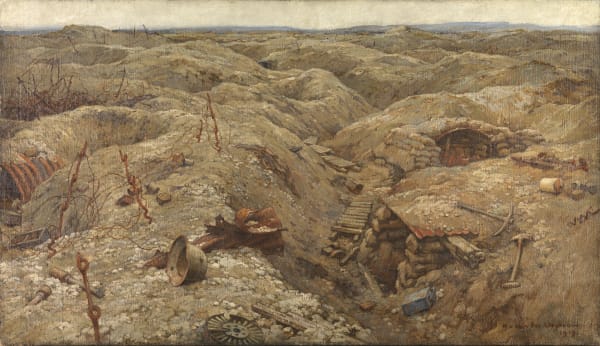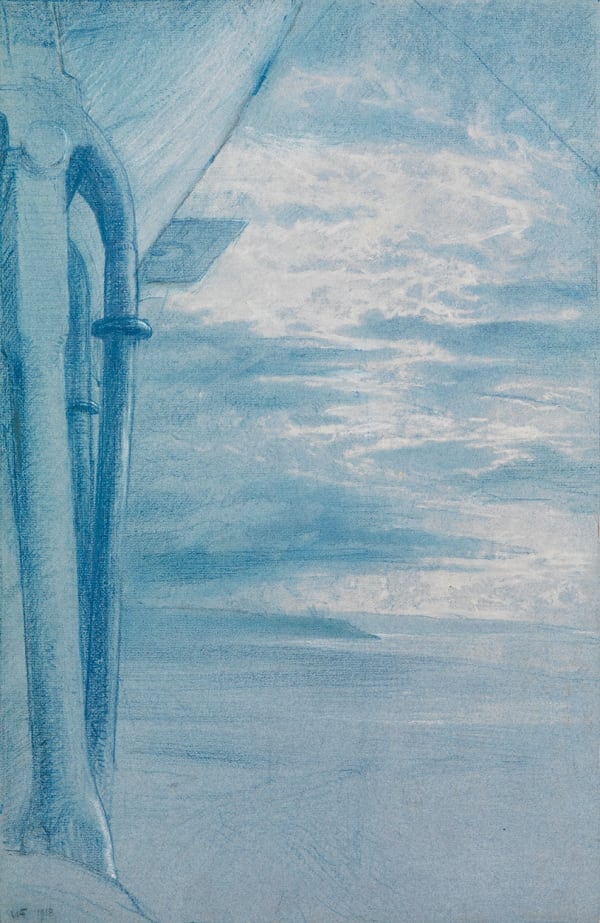George Arthur Atkinson (1920-1988)
Flight Lieutenant Atkinson, who painted this strange picture, trained to be an architect in Hull, but his studies were interrupted at the age of 21 when he joined the RAF. He soon became the bomb aimer in a Lancaster bomber of 7 Squadron of elite Pathfinder aircraft which flew ahead and dropped markers to improve the accuracy of the bomber stream following behind. He left a detailed record of his experiences, now in the Imperial War Museum. Atkinson survived several missions including the famous raid on the V2 rocket missile factory at Peenemünde (Operation Hydra) 17/18 August 1943 - but on the night of 30/31 August 1943, by the light of a full moon, he and 660 other aircraft took part in a raid on the German city of Mönchengladbach in the Ruhr Valley, a regular target for the RAF. In the painting, the Rhine can be seen to the right of the bomb site, with snow-capped hills to the left and lower ones to the right. At about 18,000 feet, after dropping bombs, Atkinson’s aircraft was attacked by a night fighter, probably an ME110, in ‘bright moonlight over a layer of [low lying] stratus cloud’, and the inner starboard engine set on fire. Receiving the order to bail out, in his own words: ‘… put on chute … found myself pinned to roof of nose as plane plunged – fell back into hatch which I had opened and pushed myself through. Counted three pulled ripcord – slightly injured shoulder through holding one lift web and lost one flying boot. Marvellous floating sensation and silence except for departing aircraft – entered the cloud layer and came out over dark landscape – a forest. Tree shot up before me – prepared for landing – parachute hitched on tree and I made a very soft landing in a bed of sand and pine needles.’ At least four members of the seven man crew died in the incident. Atkinson was picked up by the German police and eventually ended up a prisoner of war in Stalag Luft III, but did not participate in the Great Escape from there in March 1944. In the Camp, ‘doubts about the war surfaced in me’ and he suffered a nervous breakdown, before he was moved to hospital in Poland by the Red Cross. He was eventually repatriated to Britain in early 1945, and after his discharge he returned to his studies in Hull, where he painted this picture, perhaps as part of his rehabilitation. A self-portrait, our picture may also be seen as a ‘mindscape’, its mood reflecting the artist’s dark mental state. It was probably exhibited at the Local Artists’ Exhibition at the Ferens Art Gallery in Hull.
The Maas Gallery, 6 Duke Street, St. James's, London, SW1Y 6BN
+44 (0) 20 7930 9511 | mail@maasgallery.com
This website uses cookies
This site uses cookies to help make it more useful to you. Please contact us to find out more about our Cookie Policy.
